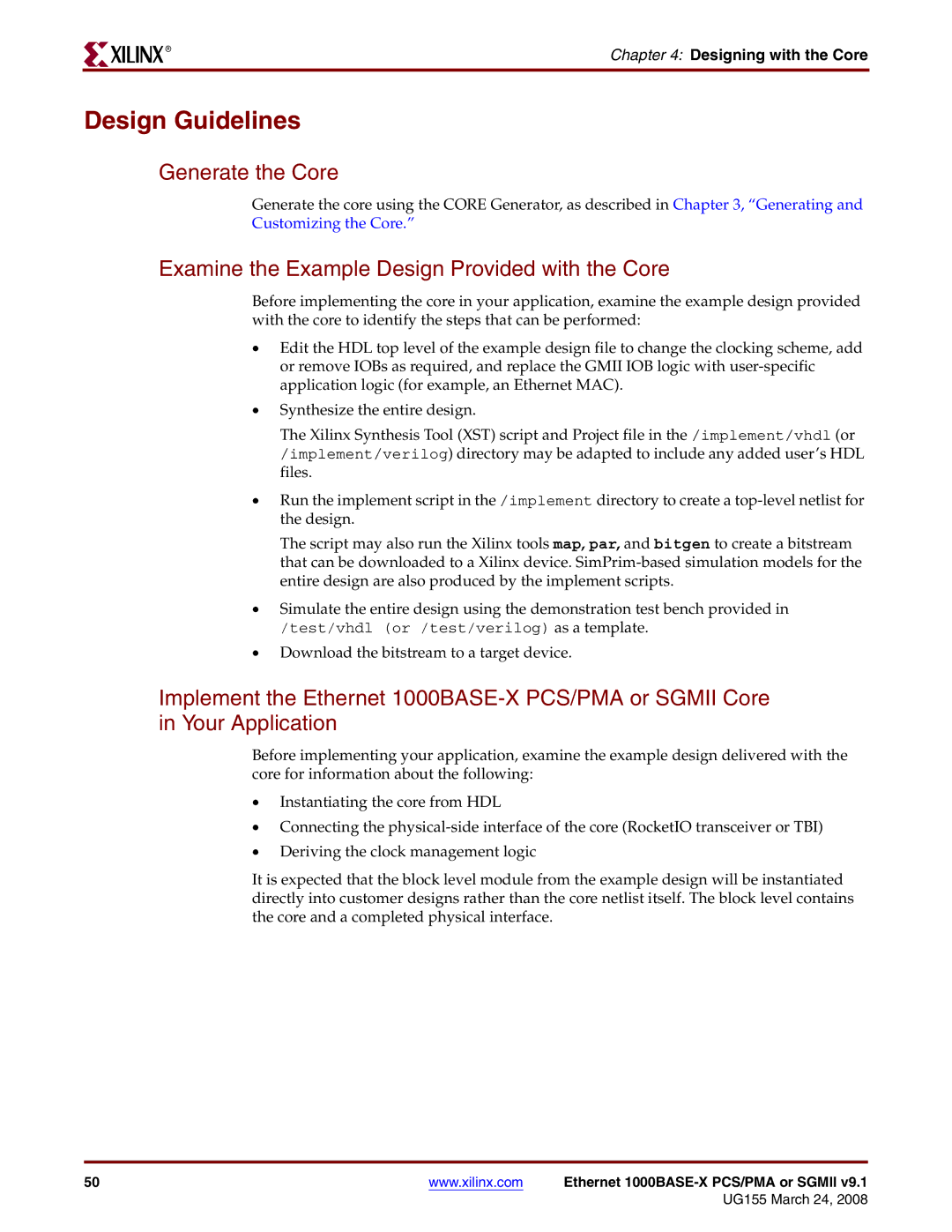
R
Chapter 4: Designing with the Core
Design Guidelines
Generate the Core
Generate the core using the CORE Generator, as described in Chapter 3, “Generating and Customizing the Core.”
Examine the Example Design Provided with the Core
Before implementing the core in your application, examine the example design provided with the core to identify the steps that can be performed:
•Edit the HDL top level of the example design file to change the clocking scheme, add or remove IOBs as required, and replace the GMII IOB logic with
•Synthesize the entire design.
The Xilinx Synthesis Tool (XST) script and Project file in the /implement/vhdl (or /implement/verilog) directory may be adapted to include any added user’s HDL files.
•Run the implement script in the /implement directory to create a
The script may also run the Xilinx tools map, par, and bitgen to create a bitstream that can be downloaded to a Xilinx device.
•Simulate the entire design using the demonstration test bench provided in
/test/vhdl (or /test/verilog) as a template.
•Download the bitstream to a target device.
Implement the Ethernet
Before implementing your application, examine the example design delivered with the core for information about the following:
•Instantiating the core from HDL
•Connecting the
•Deriving the clock management logic
It is expected that the block level module from the example design will be instantiated directly into customer designs rather than the core netlist itself. The block level contains the core and a completed physical interface.
50 | www.xilinx.com | Ethernet |
|
| UG155 March 24, 2008 |
